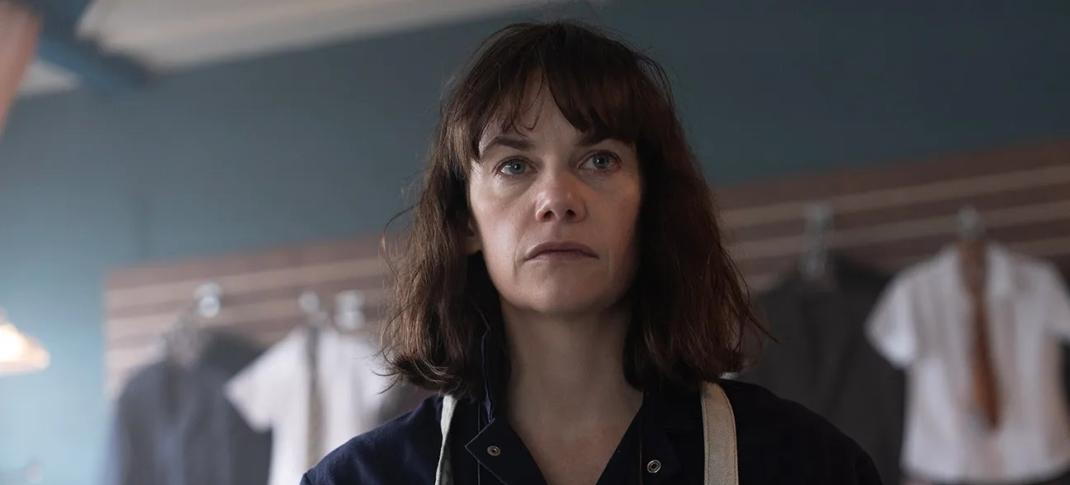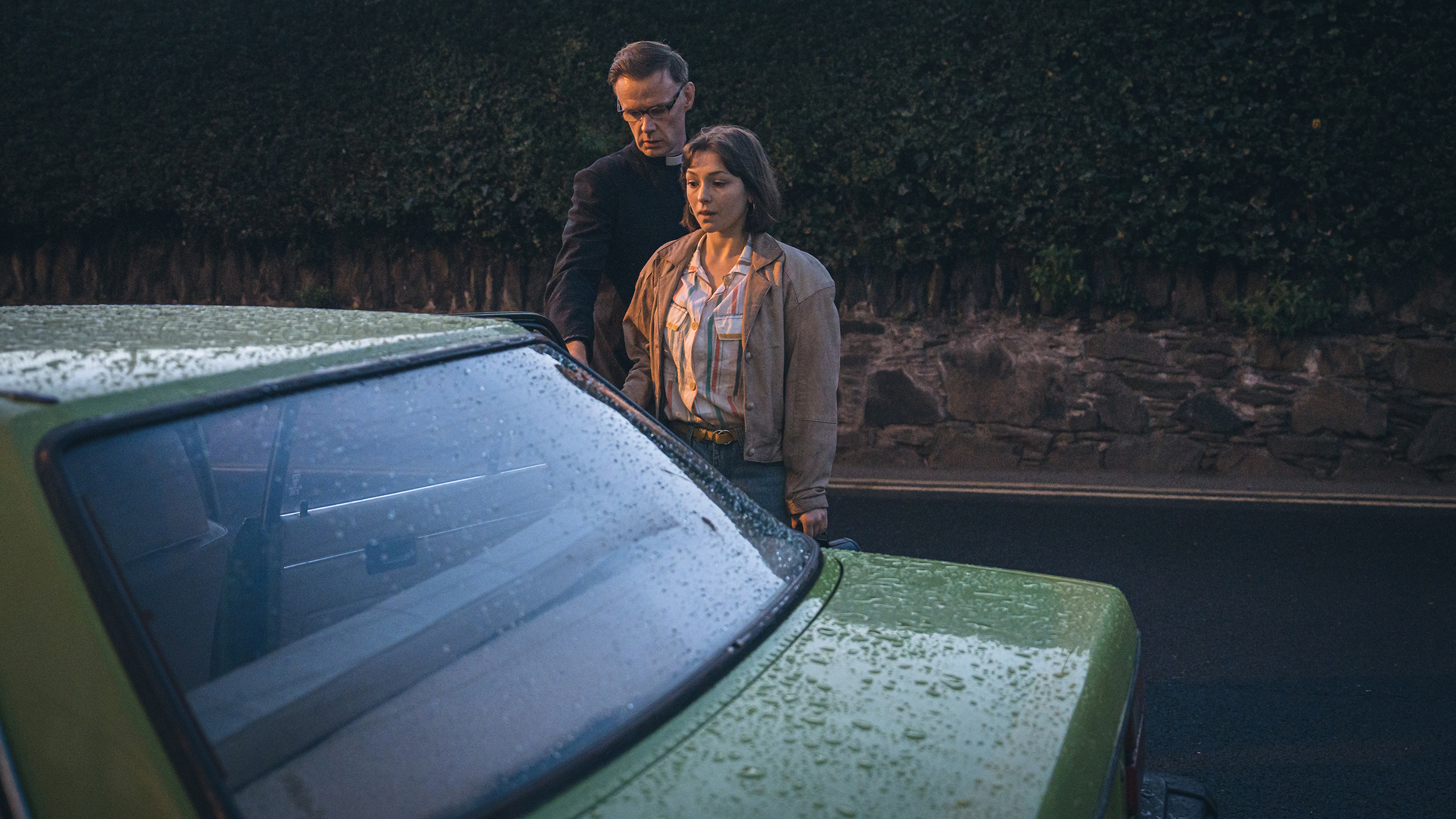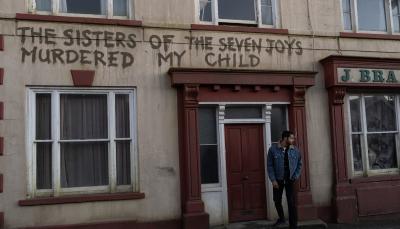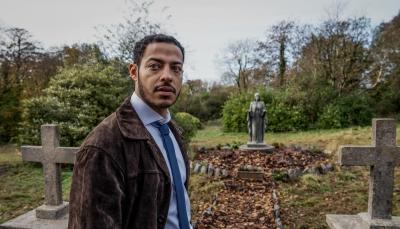Magdalene Laundries & The Shocking History Behind 'The Woman in the Wall'

Ruth Wilson as Lorna Brady.
Chris Barr/BBC/Paramount+ with SHOWTIME
If you’ve been watching The Woman in the Wall on Showtime or Paramount+, you've been experiencing some unspeakable history, unveiled piece by piece as the series unfolds. However, especially for American audiences, the concept of paces where families sent pregnant teenage girls, basically to forget about them, seems almost fantastical, including some of its claims in the early going, including the statement that last closed in 1996, less than a year before the Good Friday Agreement. Is The Woman in the Wall based on real events? Tragically, the Magdelene Laundries and the facts the show cites are all too real.
A blot on Irish history, and a challenge to the integrity of the Catholic Church and the government, the history of the Laundries and their victims is something that’s still difficult for many to deal with. Joe Murtagh, the creator of the series, explained in a BBC interview that the lack of awareness of this harrowing and relatively recent history was his inspiration:
Outside of Ireland, in my experience, this isn't really known about, and with the people who do tend to know about it, it's because they've seen films including the 'Magdalene Sisters' or 'Philomena.' When you read into it, you see how harrowing it was, the scale of it, and how many tens of thousands of lives it's touched. It was a bit of history that interested me and engaged me emotionally, but the driving factor was just people not knowing about it enough.
The idea of controlling women, and their sexuality is nothing new, and neither is the idea of silencing unruly women. The Dublin Magdalen Asylum, founded in 1765, was initially created for Protestant women, ostensibly to cut down on the number of prostitutes in major cities (it didn't work). These were charitable institutions, established to rehabilitate so-called “fallen” women in Ireland and England. In those early days, women stayed a relatively short time and were retrained as servants.
But fast forward a couple of centuries, and the Catholic Church was dominant in the founding and running of the Laundries. In 1922 there were ten Magdalene Laundries in operation in the 26 counties of the Irish Free State, and the last of them, which had been running continuously in Ulster since the 1830s, closed in October 1996. Run by the church and financed by the government, they were Ireland’s dirty secret, causing immense pain and suffering.
The inmates worked long, hard hours in a harsh environment, producing lace and needlework as well as the traditional laundry. It is estimated more than ten thousand women passed through during the seventy-year period from the 1920s to the 1990s, but we don’t even know how many women were involved. That’s not counting the family members who were implicit or complicit.
While the Magdalene inmates were predominantly women who were judged to be inappropriately sexually active, those who caused trouble in other ways could be imprisoned. When she was 14, in 1993, the late Sinead O’Connor, famous for her rage against the Catholic Church's abuses, was institutionalized at one of these places, the Sisters of Our Lady of Charity Laundry in Dublin. But not because she was pregnant, as she revealed in an interview with Irish Central.
“We were girls in there, not women, just children really. And the girls in there cried every day. It was a prison. We didn’t see our families; we were locked in, cut off from life, and deprived of a normal childhood. We were told we were there because we were bad people. Some of the girls had been raped at home and not believed. One girl was in because she had a bad hip and her family didn’t know what to do with her. It was a great grief to us.”
Sinead’s sin? Shoplifting. Other women were locked away for sexual misbehavior – or having the potential for it – and were treated with incredible harshness. Frequently, the women were given new names or numbers in place of a name. Beatings, head shaving, uniforms, bread and water diets, restricted visiting and correspondence, solitary confinement, and rules of silence were all in use. Women from psychiatric institutions and jails, homeless women without families, and victims of sexual abuse and incest were tidied away in the Magdalenes. There was no education, job training, or contact with family. (It goes without saying that men who had impregnated women outside of marriage received no sort of punishment, and the Laundries served to cover up sexual violence and incest.)
The beginning of the end for the system came in 1993 when a former Laundry was sold to a property developer who was warned there were "probably" graves on the property. Over the next decade, the remains of 155 women, many of whom were undocumented, were excavated. In 2014 Ireland and the rest of the world were shocked when another mass grave was discovered in the grounds of a Laundry in Tuam, County Galway, run by the Bon Secours order. The skeletal remains of almost 800 babies, from 35 weeks to 3 years old, were found when tiny skulls began to the surface as the area, designed as a septic tank, began to sink.
It may have been an end to the abuse, but not for the survivors, many of whom are still alive. An ambitious plan to perform DNA tests to identify the remains in the hopes of finding even very distant family members of the deceased children began in 2022. Recent estimates are that over 9,000 babies in total died in the Laundries. The institutions did not care about these infants, living or dead, or the women who gave birth to them. Causes of babies’ deaths, if they were recorded, typically included malnutrition, measles, convulsions, tuberculosis, gastroenteritis, and pneumonia, typically with huge infant mortality rates.
The women gave birth in harsh conditions with minimal medical care, and most of them had their babies taken away. A few babies were adopted in the US for large sums of money. Very few survivors have found their birth mothers, who did not expect to find closure and were prepared to take their secret to the grave, much like in The Woman in the Wall, where Lorna is faced with a pack of lies about her daughter Agnes, taken from her shortly after birth.
With the public becoming aware of the abuses of the Laundries, the government has slowly moved into action. It’s embarrassing since they were complicit in the abuse. In 2011, an inquiry was launched into the Laundries, the results of which, after 18 months, were rated inadequate by the UN Committee against Torture. However, the inquiry formally established that the state was guilty of collusion with the Laundries. In 2013, then-Taoiseach Enda Kenny apologized to survivors and announced a compensation package, which was extended in 2022. Over 800 survivors were awarded a total of €32.8 million.
The religious orders that operated the Laundries have rejected appeals from victims and Ireland’s Justice Minister to contribute financially to this fund. The quest for justice is still ongoing.
The Woman in the Wall is streaming on Paramount+ and available via Showtime.





